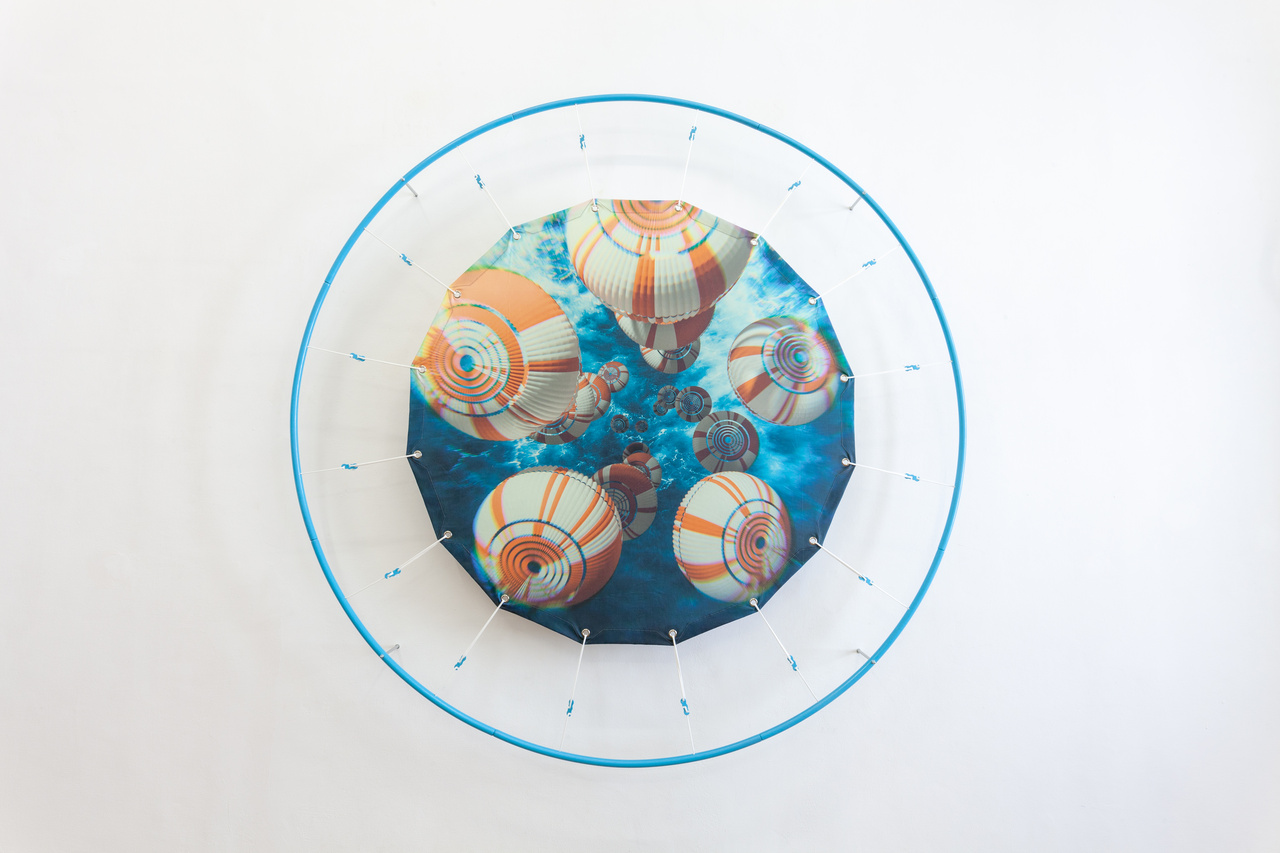
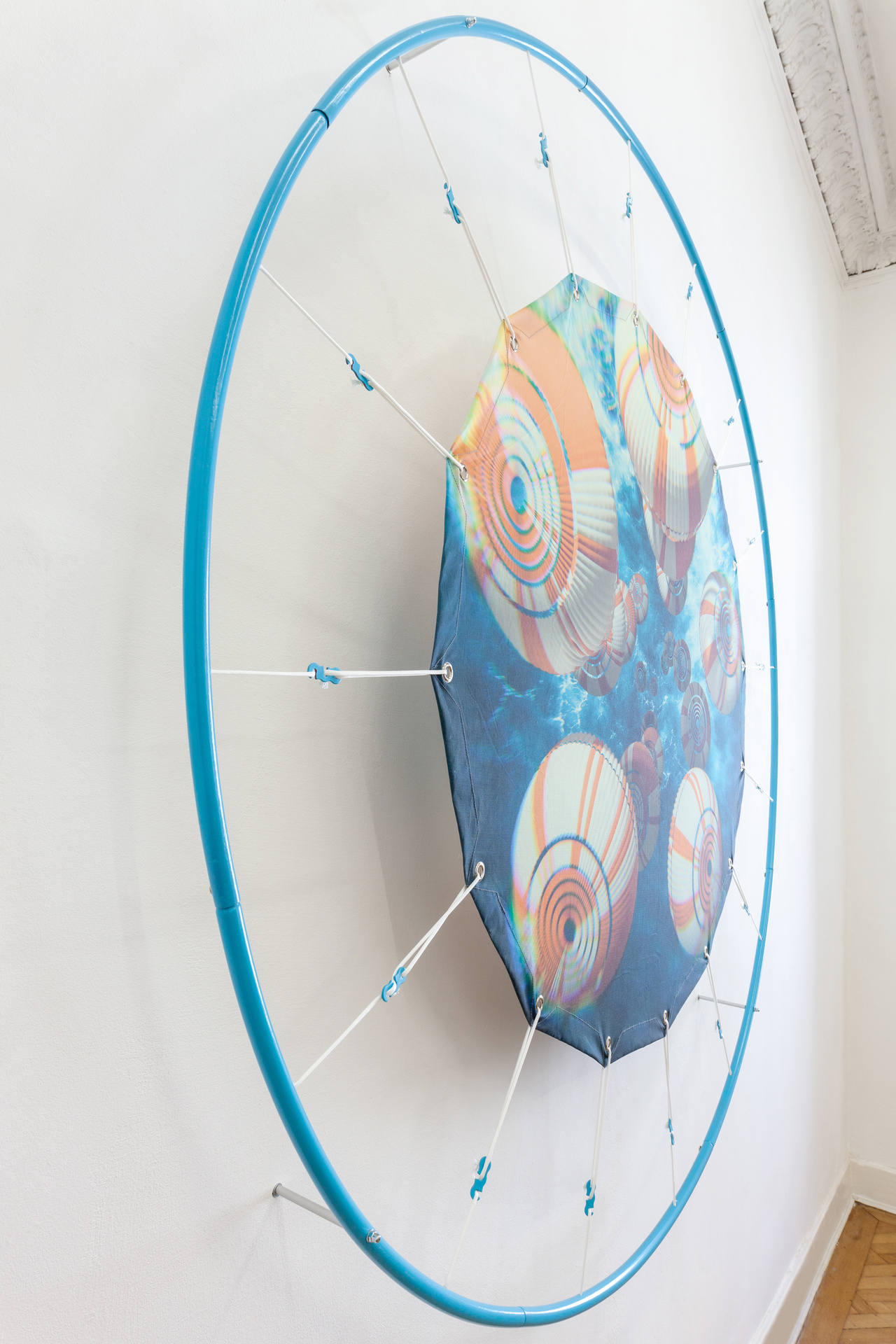
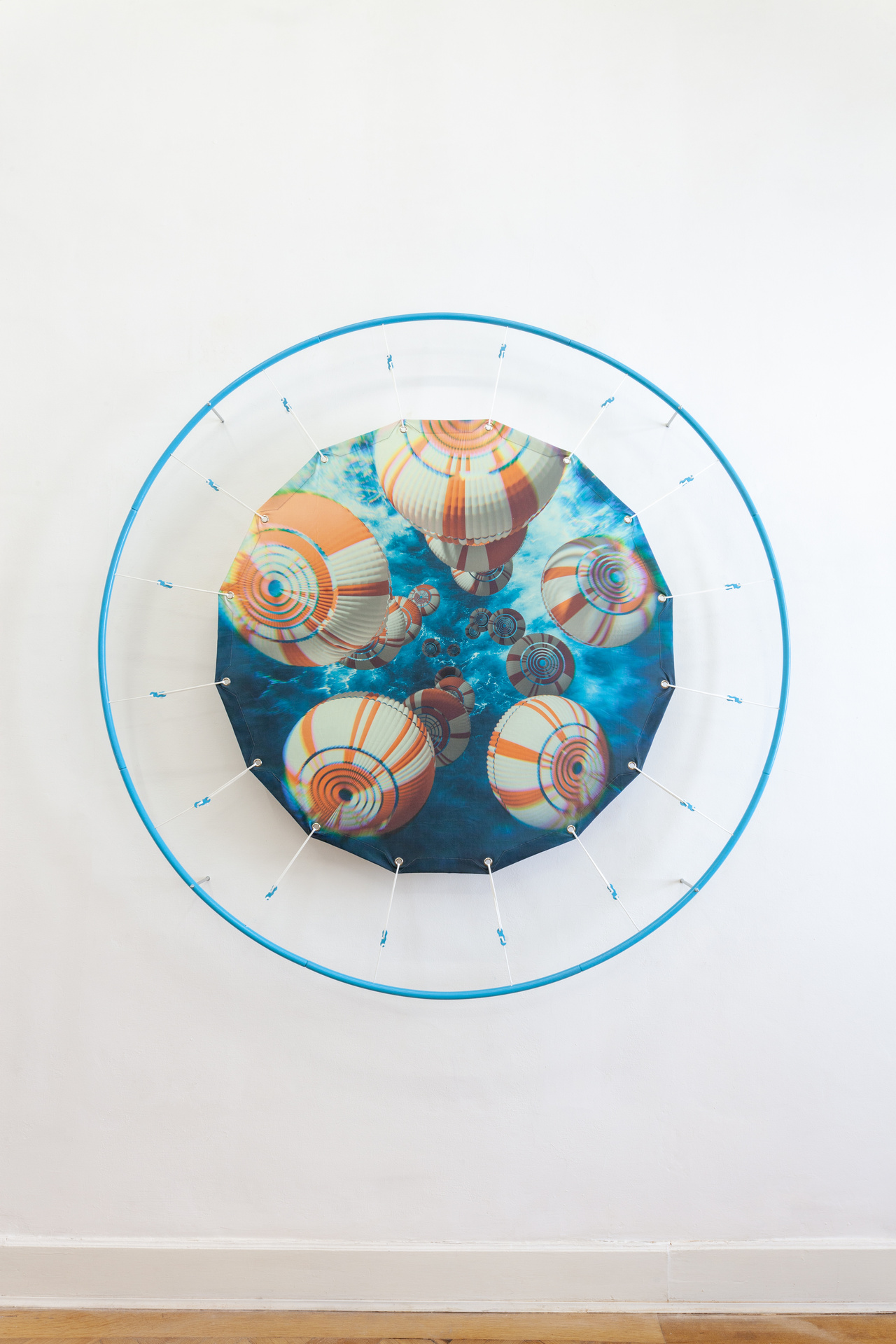
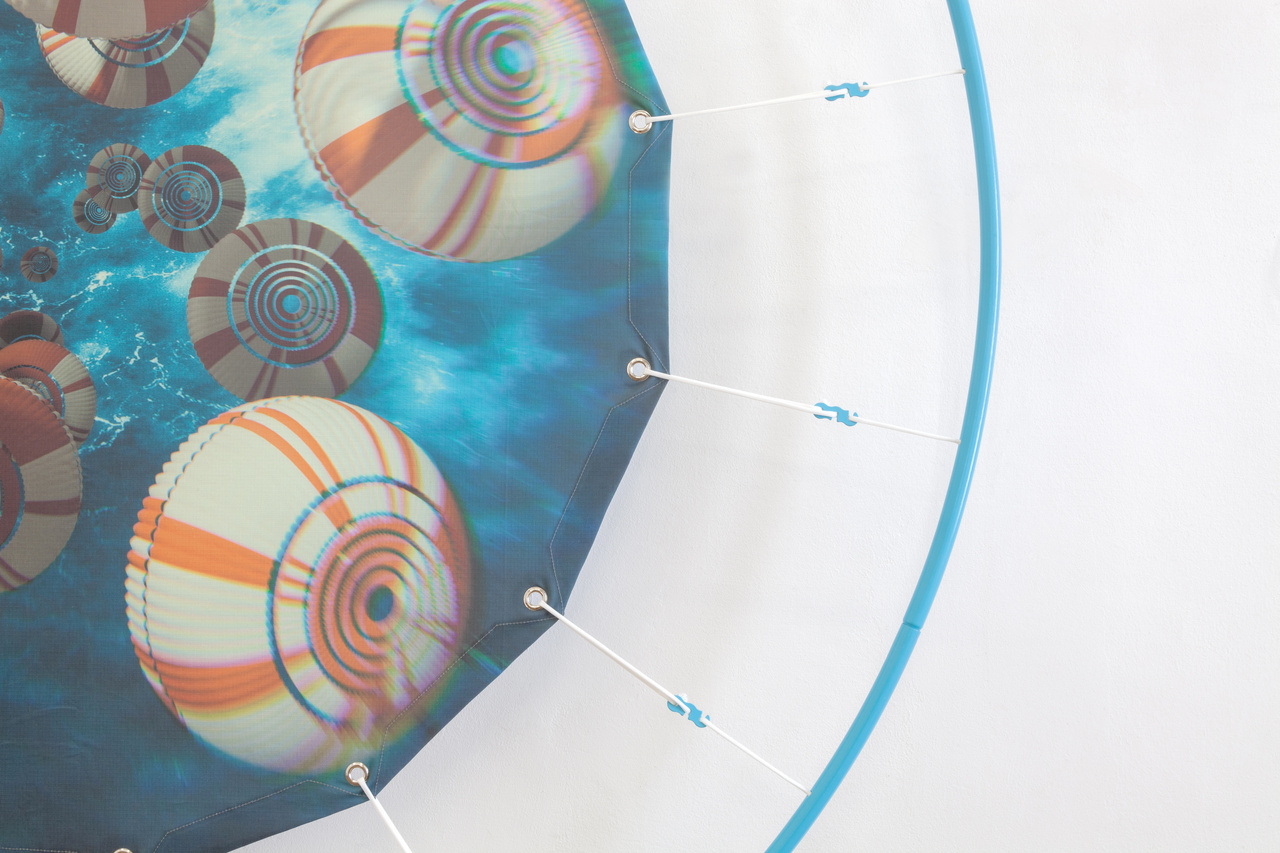
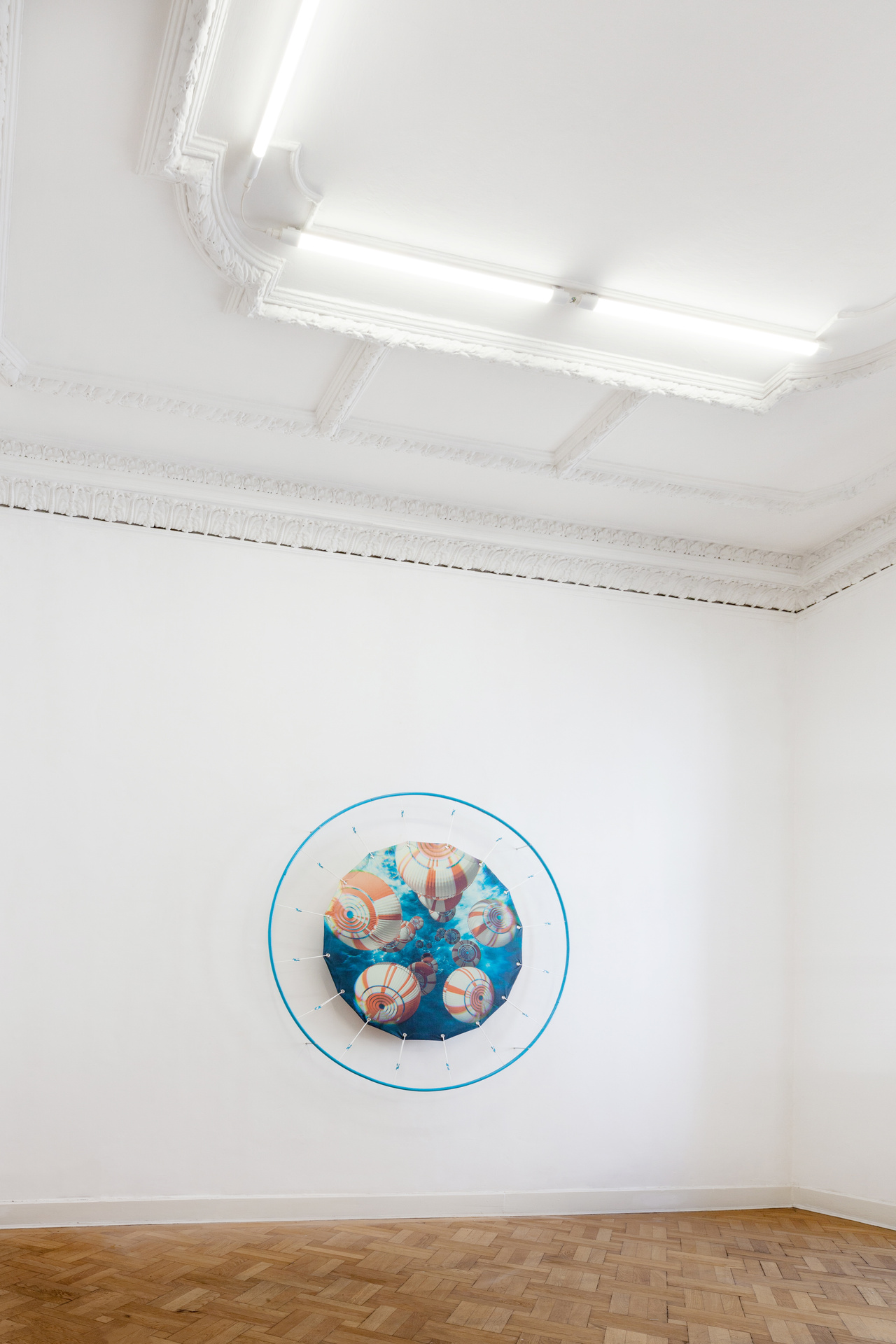

IOCOSE, Hic Sunt Leones, digital print on rip-stop, metal tubing, paracord, turnbuckles, 2024
Dimensions: diam. 180cm.
Space colonization tends toward infinite expansion. The Moon, Mars, and all the planets in the universe are potential targets for resource extraction and the establishment of human colonies. Hidden in these images is the backward movement, the vector becoming a parabola, the rejection rebounding.
The discard of space colonialism is located at a very specific point. Point Nemo is the farthest point on Earth from anywhere. Located in the Pacific Ocean between Chile and New Zealand, it is over 1,400 nautical miles from the coast. Also known as the Pole of Oceanic Inaccessibility and named in honor of the captain of Jules Verne’s Twenty Thousand Leagues Under the Sea, Point Nemo remains unexplored. There are no videos or pictures of its seafloor, only satellite images of its rippled surface.
Point Nemo is also the site of choice for dumping spacecraft and satellites, which are landed there to limit potential collateral damage. In fact, rockets and missiles contain a high concentration of hydrazine, a highly toxic chemical compound used as fuel. The remnants are allowed to land in the waves at Point Nemo with parachutes that read “Dare Mighty Things” – a motto used by NASA on many of its missions – in binary language of red and white stripes.
In this work, we replicated the imagery of Point Nemo and used binary code to write on the parachutes Hic Sunt Leones-the motto used in medieval cartography to mark unknown and dangerous lands.
Installation views of “Reverse contadictionary show“, photos by Agnese Divo


